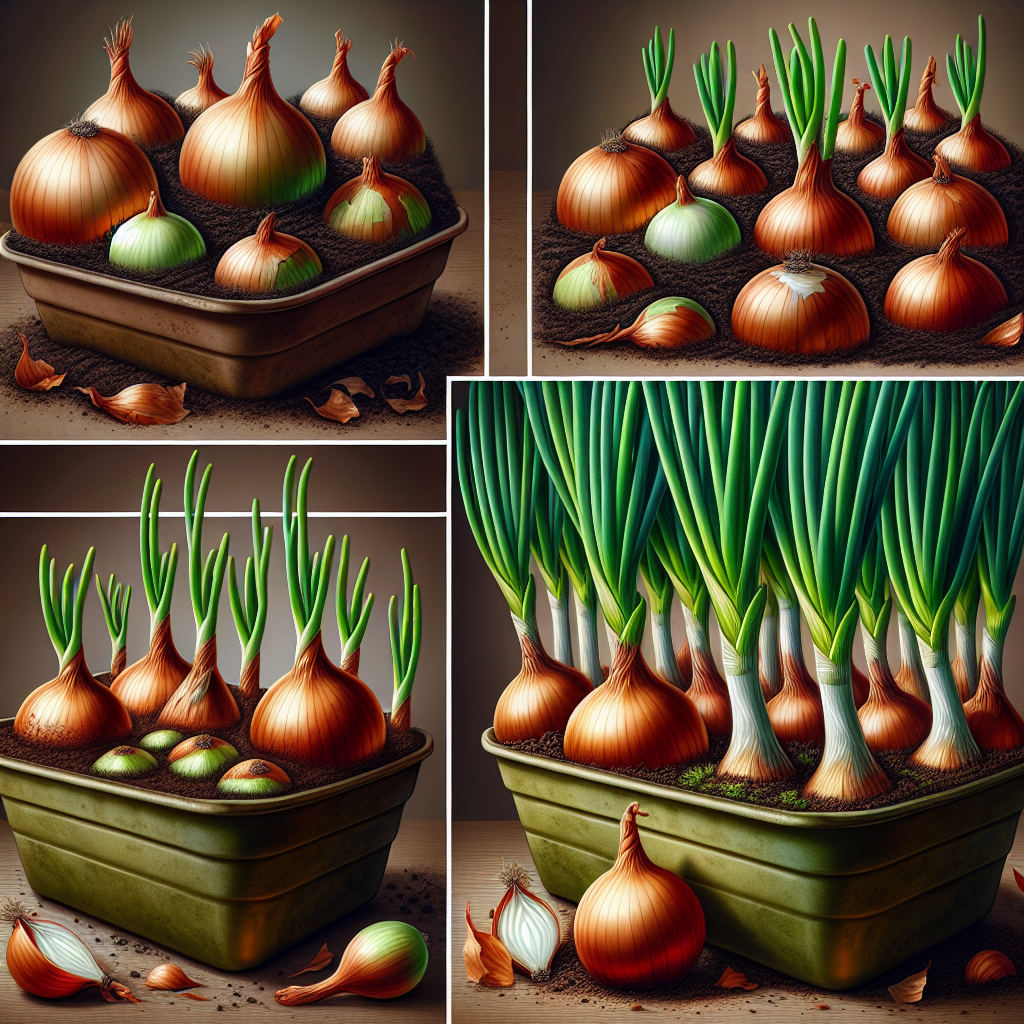Onions are a versatile and flavorful addition to any dish, making them a staple in many kitchens around the world. While they are typically grown in the ground, they can also thrive in containers, making them an excellent option for those with limited space or poor soil quality. Growing onions in containers not only saves space but also allows for better control over their growing conditions. In this article, we will explore some tips on how to grow beautifully onions in containers, from choosing the right container to harvesting your bountiful crop.
**Choosing the Right Container**
When it comes to growing onions in containers, choosing the right container is crucial for their success. Opt for a container that is at least 10-12 inches deep to accommodate the onion’s long roots. Make sure the container has drainage holes at the bottom to prevent waterlogging, which can lead to rotting roots. Additionally, choose a container that is wide enough to allow for proper spacing between onion plants. This will help prevent overcrowding and promote healthy growth.
**Selecting the Right Soil**
Onions prefer well-draining soil that is enriched with organic matter. A good potting mix specifically formulated for vegetables or herbs works well for growing onions in containers. Avoid using heavy garden soil, as it can become compacted and hinder root growth. Mix in some compost or aged manure to provide nutrients for your onion plants. Ensure that the soil pH is around 6-7, as onions prefer slightly acidic conditions.
**Planting Onions**
Plant your onion sets or seedlings about 1 inch deep in the soil, spacing them 4-6 inches apart. If planting from sets, place them with the stem end facing up and cover lightly with soil. Water thoroughly after planting to settle the soil around the roots. Onions require full sun (at least 6-8 hours of sunlight per day) to thrive, so place your container in a sunny spot on your patio or balcony.
**Watering and Fertilizing**
Onions have shallow root systems that are prone to drying out quickly, especially in containers. Water consistently to keep the soil evenly moist but not waterlogged. Check the moisture level by sticking your finger into the soil; if it feels dry at a depth of 1 inch, it’s time to water again. Fertilize your onion plants every 2-3 weeks with a balanced liquid fertilizer or a slow-release granular fertilizer formulated for vegetables.
**Managing Pests and Diseases**
Like any plant, onions are susceptible to pests and diseases that can affect their growth and yield. Keep an eye out for common pests such as onion maggots and thrips, which can be controlled with insecticidal soap or neem oil spray. To prevent diseases like botrytis blight or downy mildew, ensure good air circulation around your plants by spacing them adequately and avoid overhead watering.
**Harvesting Onions**
Onions are ready for harvest when their tops have turned yellow and started to fall over naturally. Gently loosen the soil around each plant with a trowel before pulling them out carefully by hand. Allow harvested onions to cure outdoors in a shaded spot with good air circulation for about 2-3 weeks before storing them indoors in a cool, dry place.
In conclusion, growing onions in containers is a great way to enjoy fresh produce even if you have limited space or poor soil quality. By following these tips on choosing the right container, selecting suitable soil, planting correctly, watering and fertilizing properly, managing pests and diseases effectively, and harvesting at the right time; you can grow beautifully onions right on your patio or balcony! With some patience and care, you’ll soon be enjoying homegrown onions that add flavor and nutrition to your favorite recipes.













